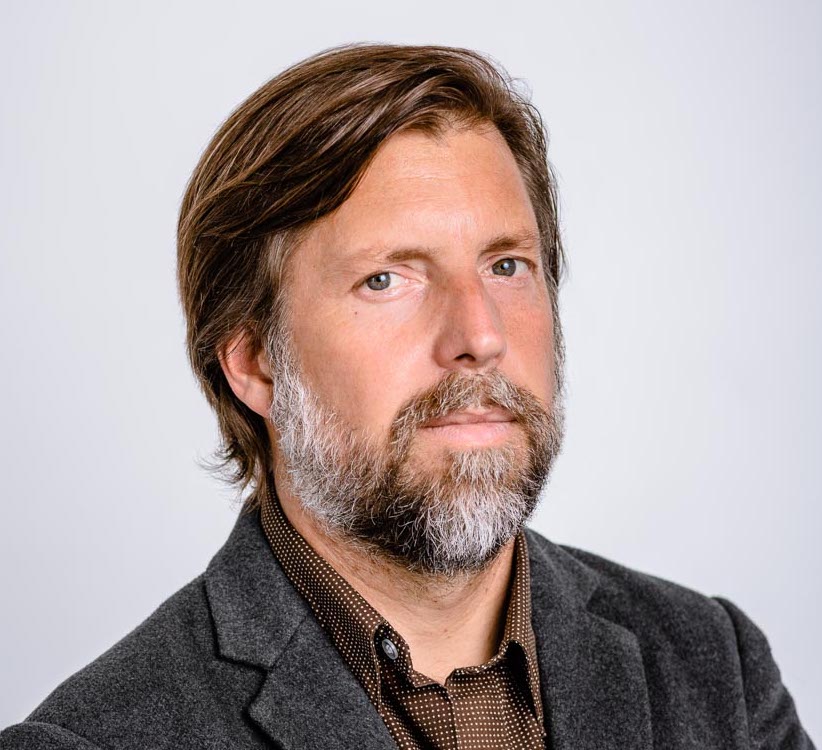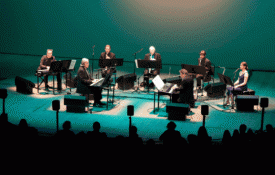I’d like you to do something. Please take a breath. As you take that breath in, consider that the air now passing down your throat into your lungs and bloodstream contains more molecules of air than all the grains of sand on all the world’s beaches. We each inhale and exhale some 30 pounds of these molecules every day—far more than we eat or drink. And the ways in which we take in that air and exhale it is as important as what we eat, how much we exercise, or whatever genes we’ve inherited.
This sounds crazy. It certainly sounded that way to me when I first heard about it years ago. But this is exactly what neurologists, rhinologists, and pulmonologists working at some of the most prestigious research institutions are now showing us. Simply changing the ways in which we breathe can help blunt the symptoms of several chronic diseases, heat ourselves on command, and help us live a longer and healthier life.
The problem is that today so few us are breathing correctly. Just look at the numbers: 9% of us have asthma, 50% of us snore, and about a quarter suffer from the chronic nighttime asphyxia known as sleep apnea. Up to 25% of the population suffers from serious overbreathing and an estimated 50% of us inhale air through slack-jawed mouths. The consequences of this poor breathing are wreaking havoc on our health. Hypertension to neurological disorders, anxiety to metabolic diseases, can all be either exacerbated or sometimes even caused by poor breathing habits.

Breath will be translated into more than 20 languages in 2021.
But improving breathing habits can have a significant impact on our well-being. It takes little effort and costs nothing. There are no side effects. In fact, the worst thing that can happen is that you’ll feel better. Here are a few things to try:
Breathe through your nose. The nose filters, humidifies, conditions, and moistens air that comes into the body. It removes particulates and pollutants, and even helps kill viruses. It also triggers hormones, increases circulation, and allows us 20% more oxygen than mouth breathing. Simply breathing through the nose has been shown to attenuate snoring and some cases of sleep apnea. This is because the nose helps create more pressure in the airway, which works to push back the soft tissues that can obstruct easy breaths.
Next, breathe a little slower, extend those exhales a little longer. Try it. For the next several minutes (say, the time it takes you to read the rest of this article) inhale to a count of about five while exhaling at the same count, or a little longer if you can. This works out to about six breaths a minute. Don’t worry if you’re a second or two off. The point is to make sure you are relaxed and comfortable.
When we breathe like this, circulation to the brain and body increases while the stress on the heart relaxes. The respiratory and nervous systems enter a state of coherence where everything functions at peak efficiency with the least effort. Just a few minutes of inhaling and exhaling at this pace can drop high blood pressure by 10, even 15 points. (If you’ve got a blood pressure monitor, measure your stats before and after and see for yourself.)
If we keep at it and continue to build healthy breathing habits, we can help maintain good health while reducing, or in some remarkable cases, reversing that list of modern day maladies that now affects the majority of the population: all that asthma, those allergies, and even autoimmune diseases.
New York psychiatrists and authors Richard Brown, MD, and Patricia Gerbarg, MD, found patients who practiced these slow-and-low breaths could blunt the symptoms of anxiety and depression. It even helped 9/11 survivors restore lung damage caused by debris, a horrendous condition called ground-glass lungs. Where all other therapies failed, breath offered significant improvement.
If we keep at it and continue to build healthy breathing habits we can help maintain good health while reducing, or in some remarkable cases, reversing that list of modern day maladies that now affects the majority of the population: all that asthma, those allergies, and even autoimmune diseases.
Take, for instance, Carl Stough, a New Jersey choral conductor who in the 1950s and ’60s developed a deep and slow diaphragmatic breathing method to help singers improve the resonance of their voices. Using the same practice, Stough treated emphysemics at the largest VA hospitals on the East Coast. Several of these patients had been bedridden for years, giving a steady diet of antibiotics and oxygen, but to no avail. Many were close to death. Stough rehabilitated the patients by teaching them how to breathe properly. He showed them how to develop their shirking lungs and atrophied diaphragms, which at the time was supposed to be medically impossible. X-rays proved it, and patients who had been left for dead walked out of the hospital.
Then there was Katharina Schroth, a teenager living in Dresden, Germany, in the early 1900s who’d been diagnosed with scoliosis and left to live the rest of her life in bed or rolling around in a wheelchair. Over five years, Schroth developed and used a technique called “orthopedic breathing.” She too did the “impossible”; she stretched and breathed her spine straight, then went on to teach hundreds of others to do the same. After decades of derision by the German medical establishment, Schroth was awarded a medal for her contributions to medicine. This teenager left to live a short life bound to a wheelchair died just three days shy of her 91st birthday.
Dozens of other people have transformed their lives through breathing: a French hairdresser who recovered from chronic lung disease and went on to run 150 miles in the Sahara Desert at the age of 68; an anarchist opera singer who (according to her notes) hiked alone through the Himalayas for 19 hours at a time without food or water, using only her breath to keep her warm and nourished; a Ukrainian cardiologist who found a way to inhale and exhale to reduce or effectively “cure” patients of chronic asthma. Their discoveries were equaling amazing, and there were piles of research—videos, X-rays, data sheets—proving their claims.

Nestor spent years in laboratories and ancient burial sites, working with researchers at Stanford, the University of Pennsylvania, and other institutions to figure out what went wrong with our breathing—and how to fix it.
So, why haven’t we heard of these people and why aren’t we all using their practices? For some reason, in some way, Stough, Schroth, and almost every other breathing researcher I’d come across was largely ignored during their lives. Several were censured. When these people died, whatever ancient secrets they’d unearthed were scattered and forgotten. This went on for decades.
I’ve come to believe that at least some of the resistance has to do with the medicine itself: air. Many scientists of the past have pooh-poohed the idea that we might affect the structure of our bodies, bones, and tissues right down to the cellular level by just changing how we inhale and exhale. Even today, even with reams of literature now proving its efficacy, healthy breathing isn’t taught in medical school. Few doctors have even heard of it; fewer prescribe it.
That’s starting to change. If there’s anything good to have come out of this foul COVID-19 pandemic, it’s that it’s made us more acutely aware of our breathing. Hospitals are now using breathing techniques to help patients better overcome the symptoms of viral pneumonia. They are now laying patients on their sides or stomachs instead of their backs so that they can breathe better while sleeping or resting.
But these practices, like all the other breath practices used by all the other people over all these centuries, are nothing new. They’ve been with us for hundreds, even thousands of years. They’ve been inscribed within the statues of the Indus Valley more than 4,000 years ago. They’ve been refined by Chinese doctors since before 400 BC. They’ve been codified and organized in India centuries after that and practiced by tens of millions of Buddhists, yogis, and monks for the past two millennia. Modern scientists at Harvard, Stanford, and other esteemed institutions are just now rediscovering and proving that so many of these ancient practices really do work: Just breathing differently can have a profound impact on our health, happiness, and longevity.
It requires no batteries, Wi-Fi, headgear, or smartphones. It costs nothing, takes little time and effort. It’s a technique our ancestors have been perfecting with only their lips, noses, and lungs for thousands of years. How we breathe, they all discovered, really matters.
I only hope this time we won’t forget it.















































